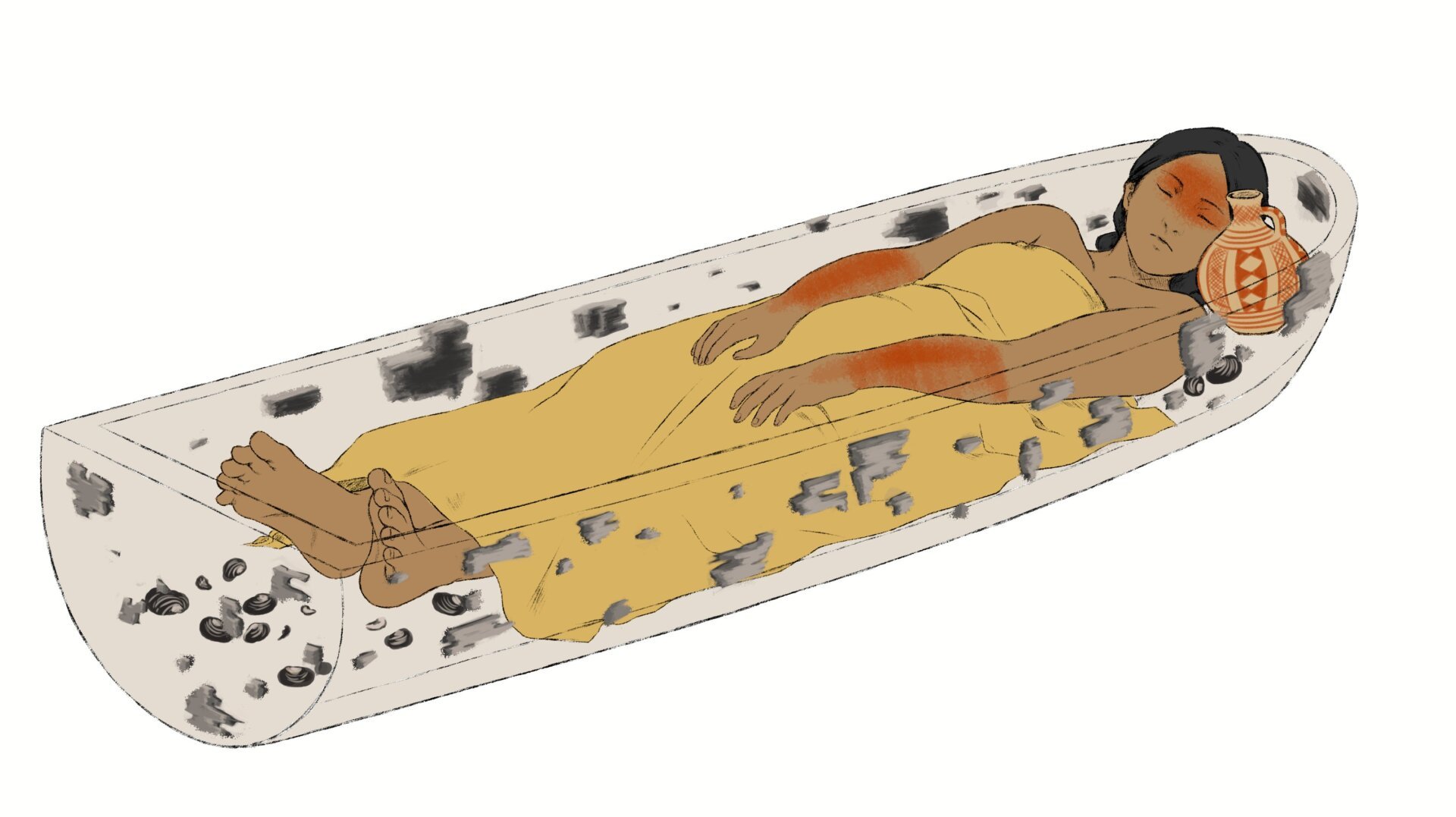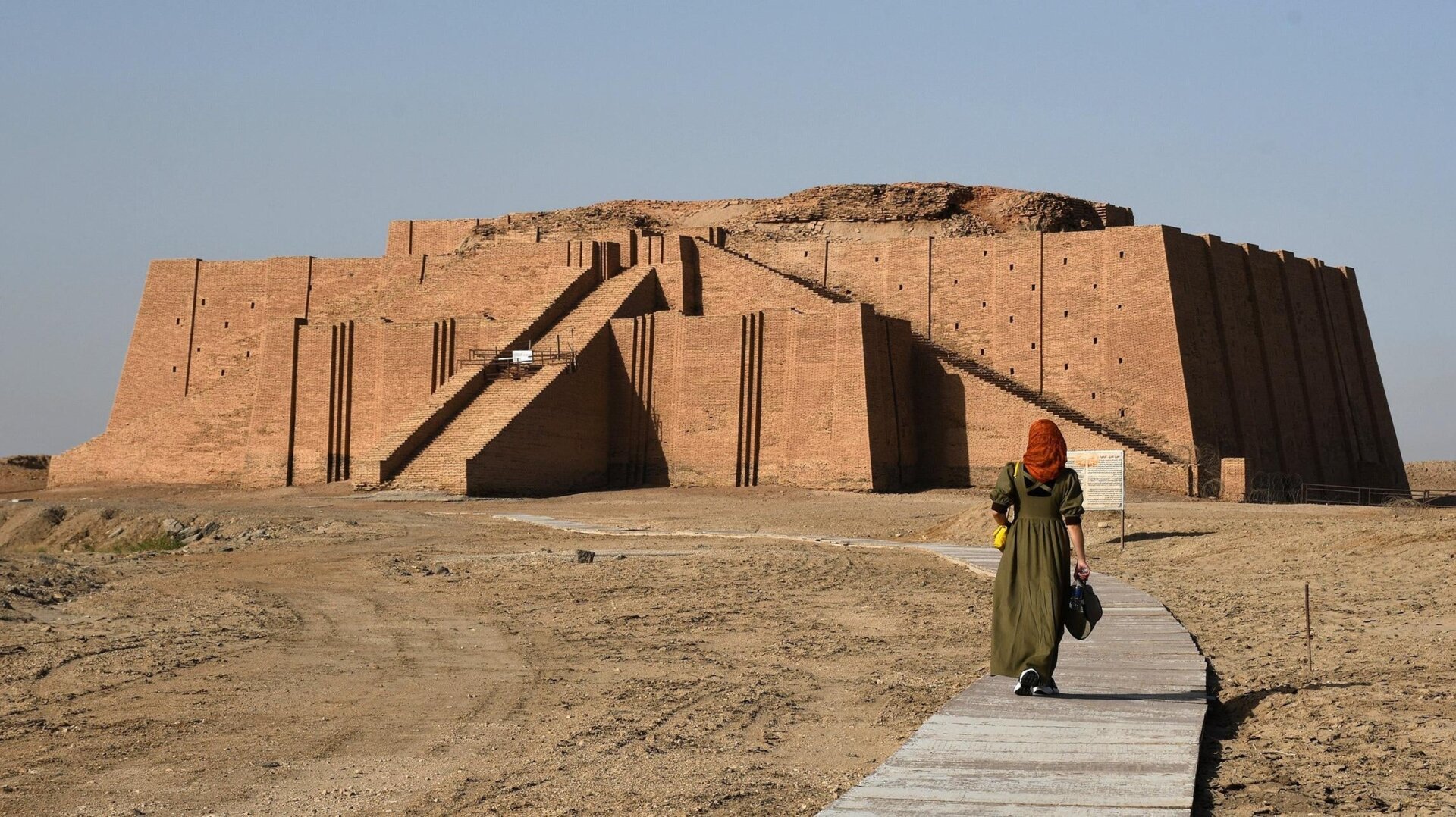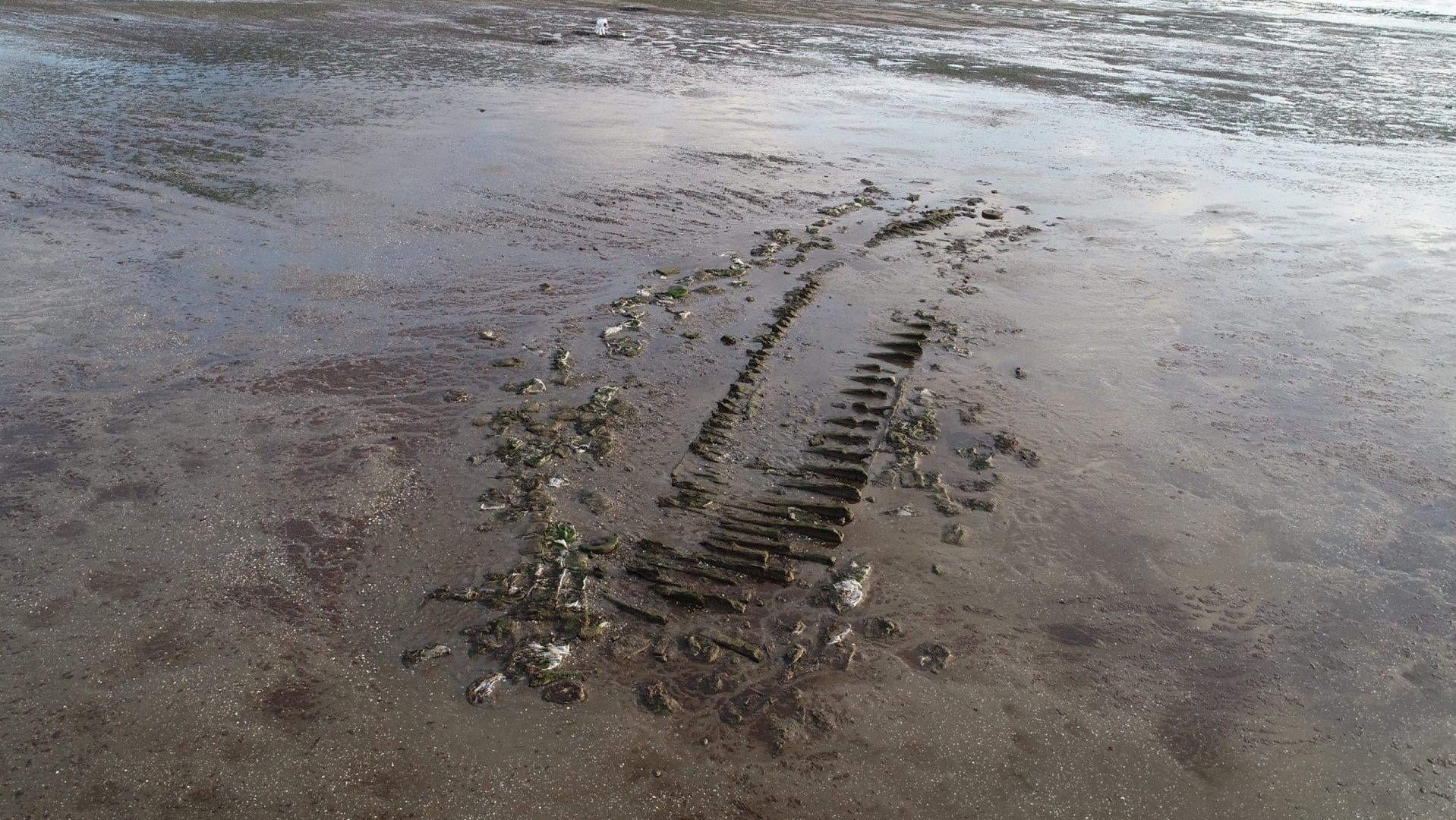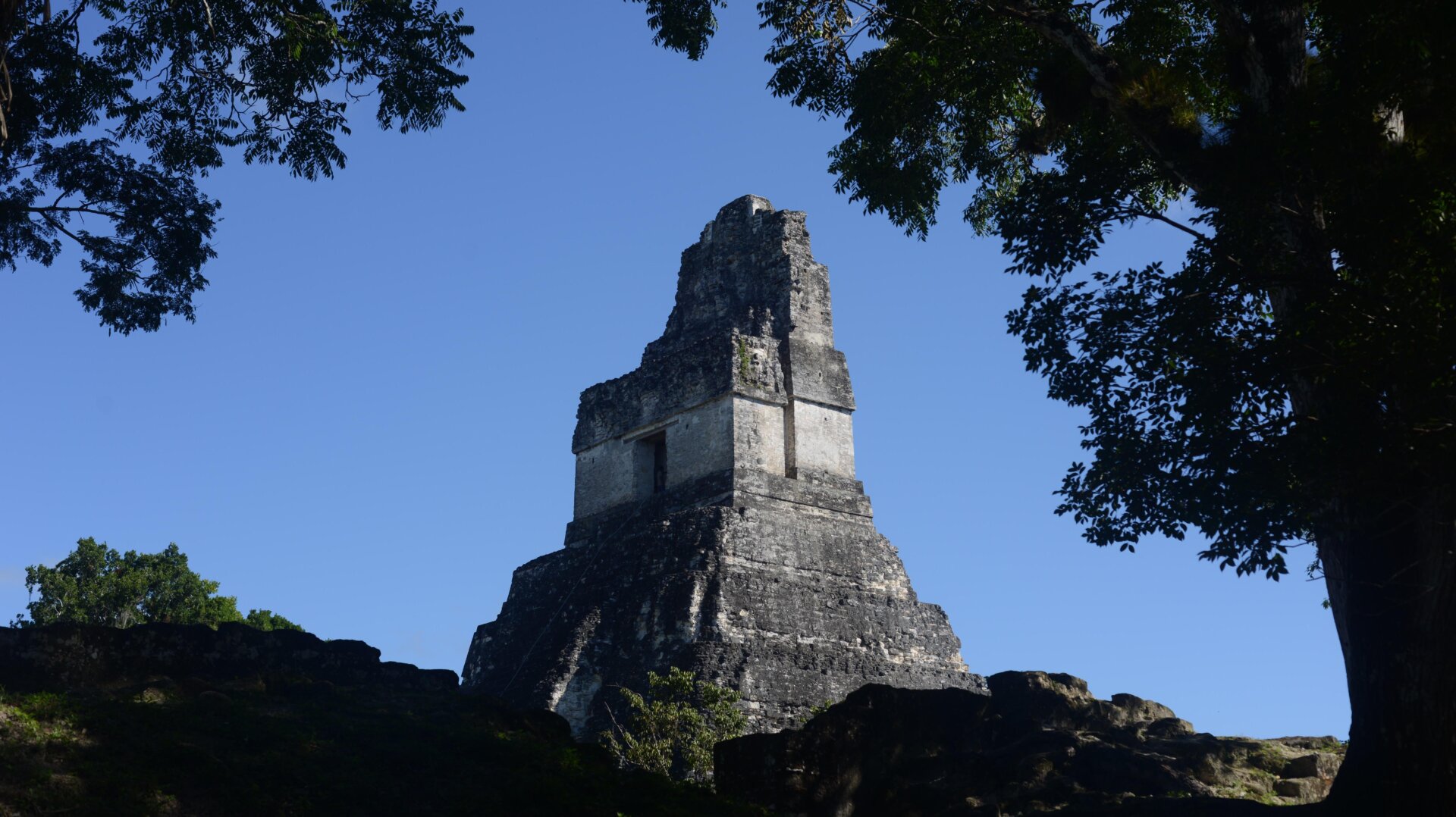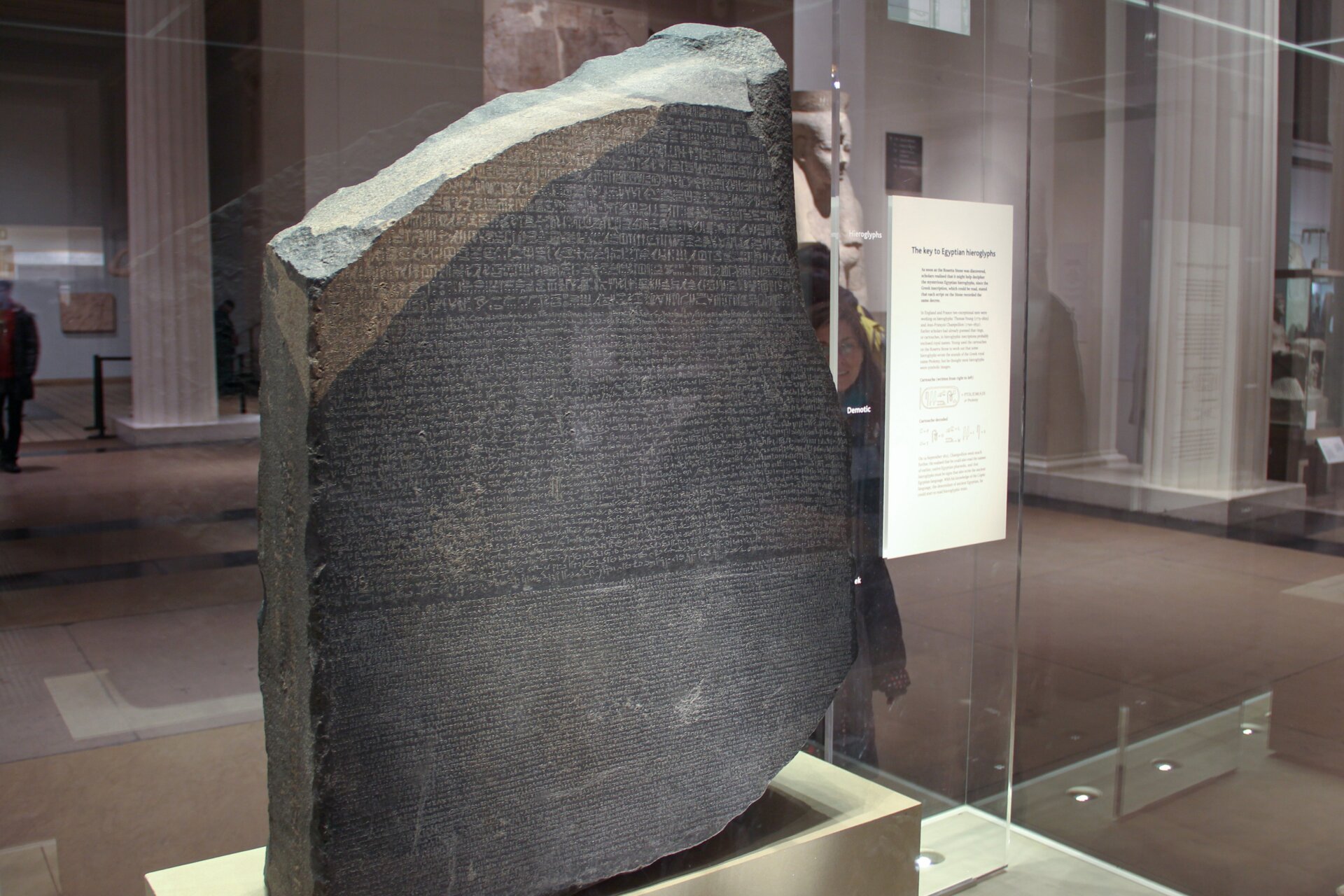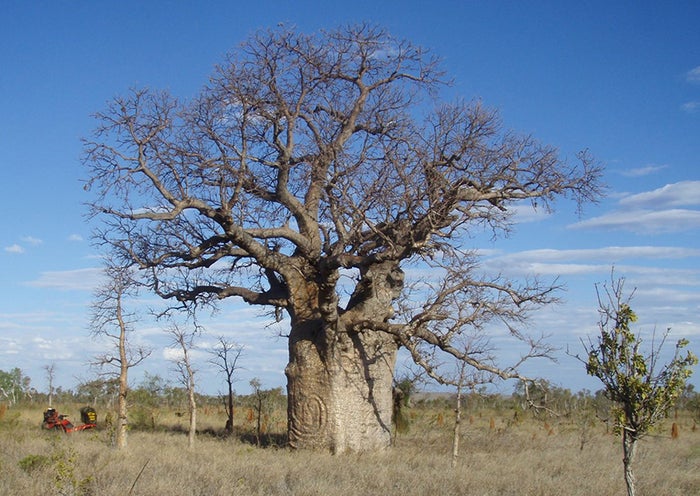Around 900 years ago, a young woman was laid to rest in a canoe near the present-day border of Chile and Argentina. This unique burial, detailed in a study published in PLoS ONE, expands the known range of ritual canoe burials farther south in South America and offers intriguing insights into the beliefs and practices of the region’s ancient inhabitants.
Archaeologists excavating the Newen Antug site in the Patagonian foothills unearthed the remains of this woman, designated as Individual 3, between 2012 and 2015. The site, located near the town of San Martín de los Andes and close to a lake, may hold symbolic significance related to the burial practice. Individual 3, estimated to be between 17 and 25 years old at the time of her death, was interred in a canoe, accompanied by a large jug placed near her head. Although the canoe itself had largely decomposed, nearly 600 wooden fragments remained, providing crucial evidence for this unusual burial rite.
A Unique Burial Practice
Microscopic analysis of the wood fragments revealed they were made of Chilean cedar, with some pieces showing signs of charring. This supports the theory that the wood was part of a dugout canoe, crafted using the traditional method of burning out the interior of a log. While this canoe-making technique is well-documented in Chile, this discovery marks the first evidence of its existence in Argentina and represents the southernmost known instance of a canoe burial in South America.
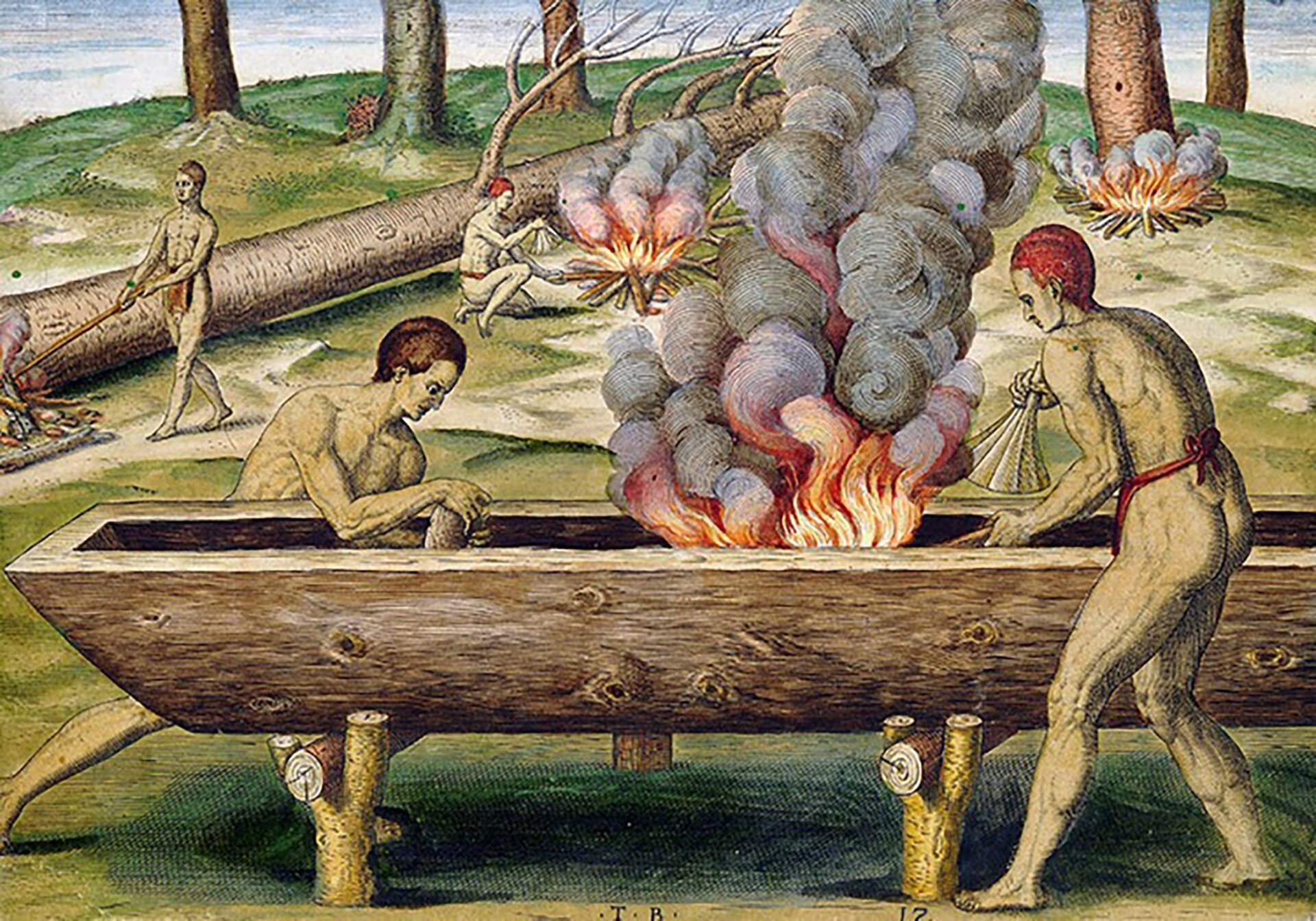 An illustration of the Mapuche method of crafting dugout canoes with fire.Traditional Mapuche dugout canoe crafting using fire (Pérez et al., 2022, PLOS ONE, CC-BY 4.0)
An illustration of the Mapuche method of crafting dugout canoes with fire.Traditional Mapuche dugout canoe crafting using fire (Pérez et al., 2022, PLOS ONE, CC-BY 4.0)
Two other individuals, designated Individuals 1 and 2, were previously discovered at the same site. These remains are more recent, dating to approximately 1482 CE, and were not buried in canoes. Their remains suggest they may have met violent ends.
Symbolic Significance and Cultural Connections
The practice of canoe burial is believed to symbolize the deceased’s journey to the afterlife. Similar ship burials are found in other cultures worldwide, including the Vikings. Given the proximity of Newen Antug to a lake and the historical association of the Mapuche people with coastal regions, the researchers suggest that water held significant cultural and spiritual importance for the woman and her community. The canoe burial may represent a symbolic voyage to a watery realm beyond.
Further Research and Unanswered Questions
While the link between Individual 3 and the two later burials remains unclear, this discovery underscores the need for further research into the ancestors of the Mapuche people and their rich cultural heritage. Further investigation may shed light on the prevalence of canoe burials among different genders and the broader cultural significance of water in their belief systems.
The 900-year-old canoe burial of Individual 3 provides a fascinating glimpse into the past, revealing unique funerary practices and symbolic beliefs of the people who once inhabited this region. The discovery prompts further questions about their culture, traditions, and connections to the landscape, urging continued archaeological exploration to unravel the mysteries of their past.



